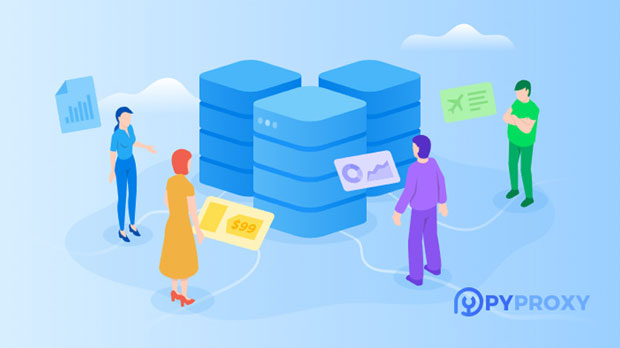In today's interconnected world, the need for seamless internet access across borders has never been greater. As companies expand globally and individuals seek to bypass regional restrictions, HTTP proxies have become an essential tool. However, when it comes to pricing Extra to Proxy HTTP services for cross-border access, several factors must be considered. These factors go beyond basic operational costs and include technical, legal, and market-specific elements. Understanding these pricing determinants can help both service providers and consumers make informed decisions. This article will delve into the critical aspects that influence the pricing of HTTP proxies in cross-border scenarios, offering valuable insights for businesses and individuals alike. 1. Infrastructure and Operational CostsThe backbone of any HTTP proxy service is its infrastructure. For cross-border access, service providers must establish servers in multiple countries to ensure efficient routing of requests. The cost of setting up, maintaining, and expanding this infrastructure is a significant factor in pricing. Factors such as server location, data center fees, hardware upgrades, and network bandwidth all contribute to the cost structure. Servers located in high-demand regions or countries with strict data sovereignty laws may incur higher operational costs. For instance, setting up a server in a region with high energy costs or one that requires advanced security measures will naturally result in a higher service price.Additionally, the need for redundancy and high availability in cross-border services increases the costs. Proxies must be available 24/7, with minimal downtime. As a result, service providers often invest in backup systems and cloud-based solutions to ensure uninterrupted service, which directly impacts pricing.2. Legal and Compliance FactorsIn cross-border access, legal and compliance considerations play a crucial role in determining pricing. Different countries have varying laws and regulations surrounding data privacy, cybersecurity, and internet access. Providers must navigate these complexities to offer services that are legally compliant in each jurisdiction. For example, the European Union’s General Data Protection Regulation (GDPR) has stringent requirements for data protection, which may require providers to implement additional security measures and processes. Similarly, certain countries may have local data storage laws, necessitating that data be stored within the country’s borders. Complying with such regulations often involves additional costs, which must be reflected in the pricing of HTTP proxy services.Moreover, providers must account for the risks of cross-border data transfers. If data is transmitted across borders, certain jurisdictions may impose fines or penalties if there is a breach of their laws. To mitigate these risks, proxy services may need to invest in advanced encryption, secure tunneling, and other technologies, further affecting the overall price.3. Bandwidth and Traffic VolumeThe volume of traffic passing through an HTTP proxy service is another critical pricing factor. In cross-border scenarios, the distance and complexity of routing data between different countries can result in higher bandwidth usage. As more data is transmitted across borders, the demand for bandwidth increases, which directly impacts service costs.Providers often charge based on the amount of bandwidth consumed, and this pricing model is highly relevant for customers who expect to route large amounts of data. High-traffic regions, especially those that are geographically distant from a service’s infrastructure, will incur higher bandwidth costs. As a result, customers in such regions may face higher service fees.4. Proxy Speed and ReliabilitySpeed and reliability are paramount in determining the overall quality of a proxy service. In cross-border access, latency can become a significant issue, particularly when proxies are set up in regions far from the user's location. For instance, a user in Asia trying to access a service in North America may experience slower speeds due to the physical distance between the servers.To address this, service providers must invest in technologies that reduce latency and improve speed, such as Content Delivery Networks (CDNs), caching, and optimized routing protocols. These solutions can significantly enhance the user experience but come at an additional cost. Therefore, customers seeking high-speed and reliable proxy services in cross-border scenarios can expect to pay a premium.5. Market Demand and CompetitionMarket demand plays a pivotal role in pricing any service, including HTTP proxies. In regions where there is high demand for cross-border internet access, service providers may charge higher prices due to the scarcity of available services. Conversely, in areas where competition is more intense, providers may lower their prices to attract customers.Cross-border proxies are often in demand in regions with limited internet access or where content restrictions are imposed. For example, businesses or individuals in regions with government censorship may require proxy services to access the global internet. In such cases, providers can price their services based on the value they offer in overcoming these restrictions.Competition also influences pricing. If there are multiple providers offering similar services in a given region, the price may be driven down due to competitive pressure. However, if the service is specialized or offers unique features, the provider may be able to charge a premium.6. Customization and Additional FeaturesAnother factor that influences the pricing of Extra to Proxy HTTP services is the level of customization and additional features offered. While basic proxy services may offer standard routing and anonymity, advanced features such as SSL encryption, advanced security protocols, or geo-targeting options can command a higher price.Customizable proxies that allow users to select specific countries for IP addresses or control their routing paths provide added value. For example, businesses that require dedicated proxies for certain tasks, such as data scraping or automated testing, may be willing to pay a higher fee for a service that meets their specific needs.Furthermore, premium services that offer enhanced security, advanced traffic management, or premium customer support typically come at a higher cost. These features are especially important for businesses or individuals who require a higher level of service quality.7. Currency Fluctuations and Payment ModelsIn cross-border transactions, currency fluctuations can significantly affect the pricing of HTTP proxy services. Service providers who operate globally may set their prices in a specific currency, but customers from different regions may face price variations based on exchange rates.Additionally, payment models, such as pay-as-you-go, monthly subscriptions, or long-term contracts, can influence pricing. Service providers may offer discounts or flexible payment plans to attract long-term customers, while customers who prefer short-term or pay-per-use services may incur higher fees due to the lack of commitment.ConclusionPricing Extra to Proxy HTTP services for cross-border access involves a complex interplay of factors. From infrastructure costs and legal compliance to market demand and customization options, each element plays a role in determining the final price. Understanding these considerations allows both consumers and providers to make informed decisions and ensures that the services provided meet the needs of users across different regions. Whether for business or personal use, paying attention to these pricing factors ensures that customers get the best value for their investment in proxy services.
Jul 18, 2025



































































